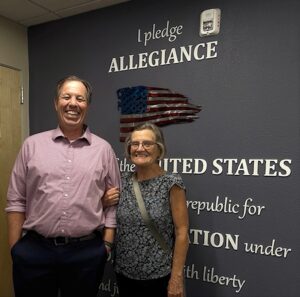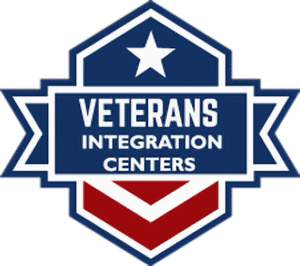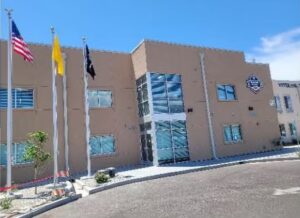NM VETERANS INTEGRATION CENTERS BOAST 89% SUCCESS RATE!
NM VETERANS INTEGRATION CENTER
CHANGING THE LIVES OF HOMELESS VETERANS & THEIR FAMILIES
By Sue Wolinsky (Caucus member)
A Parable of Living and Giving
It’s not easy for someone to bring the tattered pieces of their life back into wholeness after living on the streets.
In fact, it’s probably the hardest thing they will ever do.
It’s even harder when that someone is a military veteran trying to navigate the waters of civilian life after years, maybe decades, of being told what to do.
It takes determination to try.
It takes a safe place and a warm bed.
It takes an atmosphere of respect and dignity to start to regain self-respect.
It takes a safety net of mental health and social services.
It can take a long time.
And all this takes money. A lot of money.
The New Mexico Veterans Integration Centers (VIC) has created the model program to handle this delicate process of regaining dignity so well that it can boast a 89% client success rate at one year. It’s one of a kind.
The VIC needs our help to grow and expand services now as it navigates its first year in its new facility. However, this need may morph into survival mode in these perilous times of unforeseen levels of diminishing federal funding.
Their need gives our caucus members an opportunity to help our veteran brothers and sisters and their families. An opportunity to step in when “the man” is failing them. An opportunity to show them to know that we care.
So, let’s take this time to step inside the NM VIC together. We may see a little of ourselves in the process.
SEEING THE VIC FOR THE FIRST TIME: The tall, black, wrought iron fence seems to convey a sense of security. It is there to protect the people who live inside, until they are ready to face the outside.

The building looks like a hotel that can be seen from I-25 near Gibson in SE Albuquerque. Only the name – the NM Veterans Integration Centers – conveys its purpose.
The nondescript front door with electronic entry is another sign of the importance of safety there.
Veterans Integration Center’s new Mulberry Campus – right
The modest lobby draws your attention to veterans, with the Pledge of Allegiance, a US flag, and other military accoutrements. Here is where the journey begins.
UNDERSTANDING THE WORK: The NM Veterans Integration Centers (NM VIC) has been working diligently for the past 20 years to ensure no veteran in New Mexico is homeless They are moving staff from their office on Central Avenue SE into the new building. In that time, they have helped thousands of veterans and their families who were either homeless or on the verge of homelessness.
 The NM VIC provides a multitude of services including multiple housing assistance options, peer support, food and nutrition, and case management services to Veterans, their families and the community, according to the mission statement on the NM VIC website.
The NM VIC provides a multitude of services including multiple housing assistance options, peer support, food and nutrition, and case management services to Veterans, their families and the community, according to the mission statement on the NM VIC website.
NM VIC CEO Brock Wolff with newsletter reporter Sue Wolinsky in VIC Lobby
“The services we offer hold the key to success,“ said Brock Wolff, the NM VIC Chief Executive Officer, continuing, “We are the only Veterans Integration Center in the country. We are a New Mexico non-profit and have no affiliations to any other national organization. The model has worked with veterans nationwide with other GPD and SSVF programs throughout the nation to reduce veteran homelessness by 55% since 2010. Our country made the bi-partisan commitment in 2010 to address the homeless veteran crisis, and as a result, it remains one of the only success stories in the nation around the homeless issue. I think it is the right model which could be successful for the general population of unhoused individuals,”
The model includes:
- Street outreach
- Transitional housing made available for 4-12 months, where individuals can work on mental health, substance abuse, physical health and the development of life skills.
- Clients then work with case managers to locate permanent housing options, move into the housing arrangement with support, and have case managers work with them for up to 9 months to ensure that they do not return to homelessness. The transitional housing option is a key intermediate step as opposed to moving people off the streets directly into apartments.

“We are celebrating our 20th anniversary this year,” Wolff noted. “And we are proud of our success rate. Our transitional housing program has a successful discharge rate of 68% which exceeds the national average. Our SSVF program has an 89% success rate of clients being permanently housed 1 year after entering the program. That is phenomenal. But nothing is more satisfying than hearing the success stories from our clients. That is why we do this good work – to help our veterans. We are addressing the veteran homeless problem head on with the right combination of services.”
“We also have a fabulous staff who really believe in the dignity of our clients. Many are military veterans themselves; some are even former clients. When we serve our clients with dignity, they respond. That is the hallmark of our services. That is why we frame our fundraising campaign by calling it the Dignity Campaign,” Wolff said proudly.
“The Mulberry campus is a 20,000-square foot model facility near I-25 and Gibson that has 42 beds, offering single veterans and family rooms for veterans with families, including children and service dogs, according to their latest newsletter. The facility currently houses two veterans’ families. We have been averaging 30-35 clients in transitional housing at any given time. Last year, we served just over 250 clients in both our programs,” he said.

An 8,000-square foot addition has just been completed that will bring staff from the Central office to the new campus and will provide additional space for therapy and other needed services. The final phase will begin construction this fall and will include a donation drop-off center, food pantry, and office space for a future wellness center. Landscaping will also be done during that time which will include a walking trail, community garden, dog park, bocce ball, basketball and pickle ball courts. The goal is to have the entire campus completed by next summer.
WHERE THE MONEY COMES FROM: These facilities and services have come to life through a combination of federal funding, state and local government grants, and private donations. The funding formula is complex. “Federal funding via the Supportive Services for Veterans and their Families (SSVF) and the Grant Per Diem (GPD) make up 80% of our total revenue,” Wolff explained. “This allows us to serve military veterans but not national guard nor reserve members. That work is funded by state and local grants and supported by private donations.”
“While veteran homelessness funding has remained stable, we cannot predict future changes. Since federal funding provides 80% of our revenue, any reductions would be significant,” Wolff explained. “That’s why our state and local government funding, as well as significant private donations, are so important. Last year, we raised $300,000 in private donations (excluding the capital campaign to fund the facility construction).”
“The biggest ways that we are looking at expanding our private fundraising efforts is through our naming rights campaign. This will allow a donor to name individual rooms on our new campus. We also have our “Buy a Brick” program, currently starting at a minimum $500 donation; we hope to add a $150 brick level to attract individual donors. We also take vehicle donations and accept donated goods and bequests. One good thing that makes our donors feel very comfortable is that we have a ~20% administrative overhead rate. That means that 80% of donations help veterans directly.” Wolff explained.
“We are also applying for several grants that are available. We are planning on expanding our work with the State’s Health Care Authority to grow our behavioral health services. We will continue to advocate at the state level for more state support of our services to homeless veterans,” Wolff said. Ways to get involved and help can be found on the NM VIC Get Involved page.
“All in all, our services depend on you, our community, and on our state and local governments and the federal government. We will rely even more on our private donations moving forward. We hope you can help us continue to serve our NM veterans and their families. They are depending on all of us to help,” Wolff encouraged.
Haha, the 89% success rate at the NM VIC is truly phenomenal! Its almost like they have a secret recipe for turning tattered veterans back into whole, functioning members of society – probably involving lots of respect, dignity, and maybe avoiding direct jumps into apartments. Its a model so effective, I bet even the SSVF program clients are plotting to overthrow the national average. And the new Mulberry Campus sounds like a luxury hotel for veterans, minus the expensive room service! Kudos to the folks there for making such a difference, even as they juggle federal funding like a high-stakes game of Jenga. Keep up the great work, and maybe open a franchise soon!